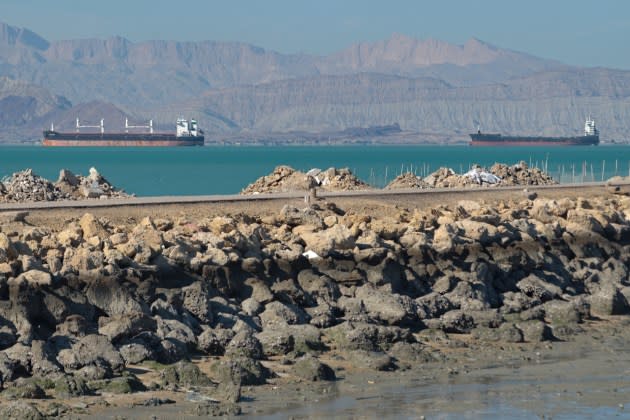DUBAI — Commercial shipping traffic through the Strait of Hormuz is showing significant signs of slowdown as tensions between Israel and Iran escalate, prompting oil tanker reroutes, surging freight rates, and rising concerns over a potential supply chain crisis in one of the world’s most critical maritime chokepoints.
According to shipping analytics firms and port authorities, the number of container ships and crude carriers navigating the narrow waterway has fallen well below normal levels since mid-June. Some vessels are diverting to longer routes via the Cape of Good Hope, while others remain anchored near Fujairah or reduce speed to assess risk.
“Container traffic is down nearly 70% from standard volumes, and many tankers are reporting GPS interference and spoofing near Iranian waters,” a Gulf-based shipping analyst told Business Journal Magazine, requesting anonymity due to the sensitivity of the situation.
The Strait of Hormuz—only 21 miles wide at its narrowest point—facilitates the passage of around 20% of globally traded oil and a significant volume of liquefied natural gas (LNG), particularly from Qatar and the United Arab Emirates.
Risk Premiums and Oil Prices Surge
On Monday, rates for Very Large Crude Carriers (VLCCs) on the Middle East-China route jumped over 40%, reaching levels not seen since the Red Sea disruptions earlier this year. Freight and insurance costs have also spiked.
“The geopolitical premium is back in full force,” said Arjun Mehta, regional head of shipping risk at OMC Energy Services. “We are advising clients to factor in longer transit times and elevated war risk insurance.”
Brent crude futures climbed to $84.50 per barrel on Tuesday, up nearly 9% from last week’s average, amid fears of further escalation. Analysts warn that a partial or full shutdown of Hormuz could push prices beyond $100 per barrel, triggering inflationary ripples across global markets.
Electronic Warfare Concerns
Adding to the unease, at least 260 vessels have reported navigation interference, including spoofed GPS signals and jamming, particularly in waters close to Iranian territory. U.S. and EU maritime security advisories have urged commercial operators to exercise “extreme caution” and maintain contact with naval coordination centers.
The recent collision between two oil tankers near the UAE coast—though not attributed to direct military action—has highlighted the volatility in the region. Both vessels were evacuated, with one sustaining moderate damage. Investigations are ongoing.
Political Rhetoric Raises Stakes
Iranian officials have issued increasingly sharp warnings. On June 14, members of Iran’s Parliament suggested the country “reserves the right” to close the strait in response to what they claim are Israeli provocations backed by Western allies. No formal closure order has been enacted, but the threat alone has sent shockwaves through oil markets and shipping corridors.
In response, U.S. Naval Central Command has reinforced its maritime presence in the Gulf, stating the strait remains open and “secure for transit,” though it acknowledges the uptick in maritime risk and surveillance operations.
Global Supply Chains on Alert
The shipping slowdown is already impacting logistics networks beyond the region. European and Asian ports are bracing for delays in oil, gas, and manufactured goods, particularly in the chemicals and automotive sectors that rely on timely Middle East shipments.
India, Pakistan, and China—major recipients of Gulf crude—are reportedly exploring contingencies in case of prolonged disruption. Some LNG shippers are seeking temporary storage until safer routes become viable.
Outlook
While a full-scale military escalation remains a worst-case scenario, the Strait of Hormuz has once again proven itself a geopolitical pressure valve with enormous global ramifications. As shipowners, insurers, and supply chain managers adjust their risk models, the energy and shipping sectors are bracing for a tense summer.






